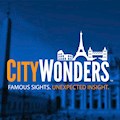
Pope Saint John Paul II
As he read the words that sealed the deed, Pope Francis spoke at length of the "courage" showed by his two predecessors. He noted that they lived through some of the most trying times the world has ever faced without losing their faith or faltering in the face of unpleasant tasks.
In his remarks, Francis labeled Pope John XXIII as "pope of openness to the Spirit," a reference to his work with the momentous Second Vatican Counsel and his subsequent drive to implement the doctrinal changes that it proscribed. Meanwhile, he referred to Pope John Paul II as the "pope of the family." Both men, he said, upheld the Catholic Church's commitment to spreading the word of God with humbleness and dignity.
Naturally, Saint Peter's Square was standing-room-only for the event. The Vatican's authorities set up dozens of TV screens in central Rome's squares, though, to provide a live feed of the event to interested spectators who couldn't make it within earshot of Pope Francis.
The ceremony was also noteworthy because it marked the first public appearance of Pope Emeritus Benedict XVI since his retirement in early 2013. Although the details of the arrangement weren't made public, he appeared to have been encouraged to attend the ceremony by Pope Francis himself. The presence of four popes - two living and two deceased - in the same ceremony was without modern precedent.
Both of the canonized popes enjoyed strong support from the faithful. As the first non-Italian pope in nearly 500 years, John Paul II attracted thousands of pilgrims from his home country of Poland. Many there remember his contributions to Poland's Solidarity movement, a 1980s-era push by workers to throw off the yoke of Communism during the later years of the Cold War. Thanks to a grueling travel schedule that saw him visit more than 120 countries in person, John Paul II also attracted members of the faithful from places as diverse as sub-Saharan Africa, the United States and South America.
Although he passed away nearly 50 years ago, Pope John XXIII enjoyed strong support as well. He's still remembered fondly for his work with the far-reaching Second Vatican Council. Two years after his death in 1965, the council enacted a sweeping set of changes that included eliminating mandatory Latin Masses, opening an ecumenical dialogue with leaders of the Jewish faith and de-emphasizing the role of Judaism in the crucifixion of Jesus.
One thing is for certain: Sunday's brilliant ceremony won't be repeated anytime soon.
Interested in seeing the Vatican without the long lines? Check out our video and then browse our Vatican tours.


